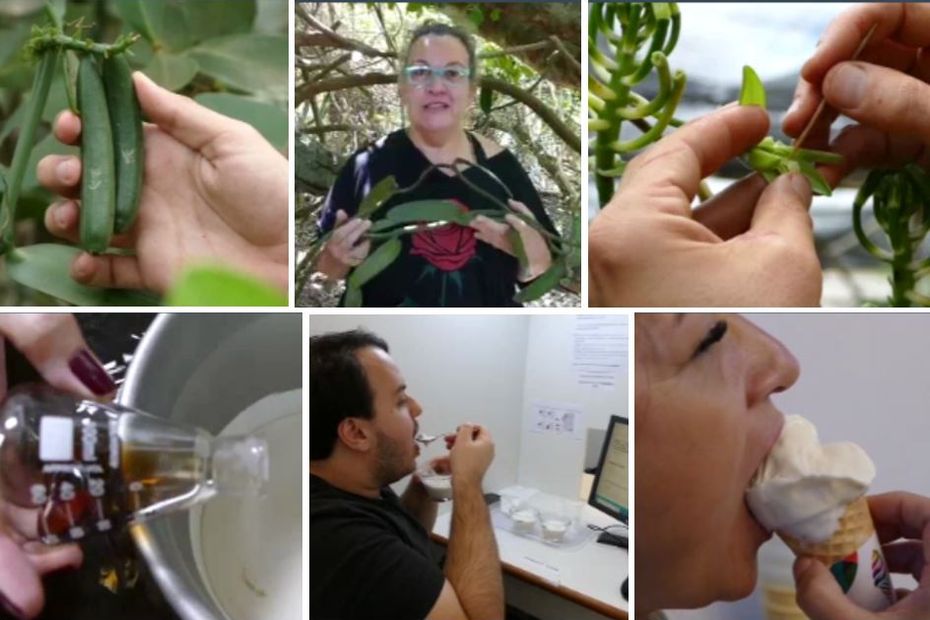Brazil holds the record for the number of wild aromatic vanilla varieties. Also, new species, from the country’s forests, are being tested by scientists, to replace imported or synthetic vanillas. Objective: self-sufficiency for a spice that has become very precious.
Biologists have been exploring a coastal forest near Rio de Janeiro for some time. While this is not surprising in itself, what is surprising is what these scientists are looking for: wild vanilla plants.
Victorious, Renata Tavares de Oliveira brandishes a specimen of one of them: “This is bahiana vanilla, a synonym for pheanta vanilla. It is a species found in Brazil, but also in other Latin American countries.”
For years, these researchers from the integrated plant biology laboratory of the Federal University of the State of Rio (UniRio) have been mapping the existence of wild vanilla. They can be found in various places, even very busy ones, such as at the foot of Rio’s famous Sugarloaf Mountain.
With around forty species, Brazil is home to the greatest diversity of aromatic vanilla in the world. A major asset according to Andrea Furtado Macedo, a rare chamissonis vanilla vine in hand. This botanist, laboratory coordinator, directs the project. She discovered vanilla in nature by chance in 2004. Since then, she has devoted herself to these plants and is full of praise for them. “These vanillas have extremely aromatic and tasty fruits, which can be used in the food, cosmetic and pharmaceutical industries”she explains.
As a result, the new vanillas discovered in nature are studied closely by scientists. Their fruits are harvested when ripe, then used for tissue culture (to reproduce plants) and extraction.
In addition to possible toxicity and other chemical properties, their taste qualities must be evaluated. Three varieties were tested recently. The procedure is simple.
The pods are first dried. Then, pieces are mixed with liquid hydrogen at -200 degrees Celsius, for crushing. Eventually, a brown liquid is produced to flavor foods.
At the food laboratory of Embrapa Food Technology, in Rio, Ana Carolina Chaves uses one of them: “It’s cribbiana vanilla extract, and we’re going to add it to flavor the ice cream.”explains the food engineer, as he does so.
In total, the preparation takes several hours.
After the ice creams are made, the different samples are tasted by consumers. These indicate which one they prefer, if they would be likely to buy an ice cream with this flavor…
In a year, the laboratory will indicate the selected varieties to manufacturers.
Currently, Brazil cultivates very little vanilla. It is mainly planifolia: a species native to Mexico and mainly cultivated in Madagascar. But faced with strong local demand, researchers want to change the situation, as Ana Carolina Chaves explains: “We are therefore looking for new sources of vanilla, starting with our biodiversity, in order to add value to the products of our biodiversity and to replace the imported vanilla that we use in our products here in Brazil.”
The stakes are high. Vanilla is the second most expensive spice in the world, after saffron. And its cultivation requires a significant workforce. Zoltan Raffai, director of Toldya Vanilla, uses non-Brazilian vanilla varieties. He explains that, even in the presence of bees, they “only pollinate 10% of flowers”. In its plantations, pollination is therefore carried out manually. It should be noted that the technique was invented by Edmond Albius, a slave from Reunion in the 19th century. “By doing this, we can pollinate between 90 and 95% of the flowers, which allows us to better control the number of flowers we pollinate.”describes Zoltan Raffai.
Clearly, research on wild vanilla could, in the long term, allow Brazil to reduce its imports and create jobs…
REPORTAGE/
Overseas The 1st: Bruno Sat, Monika Grassl, Romain Supe.


